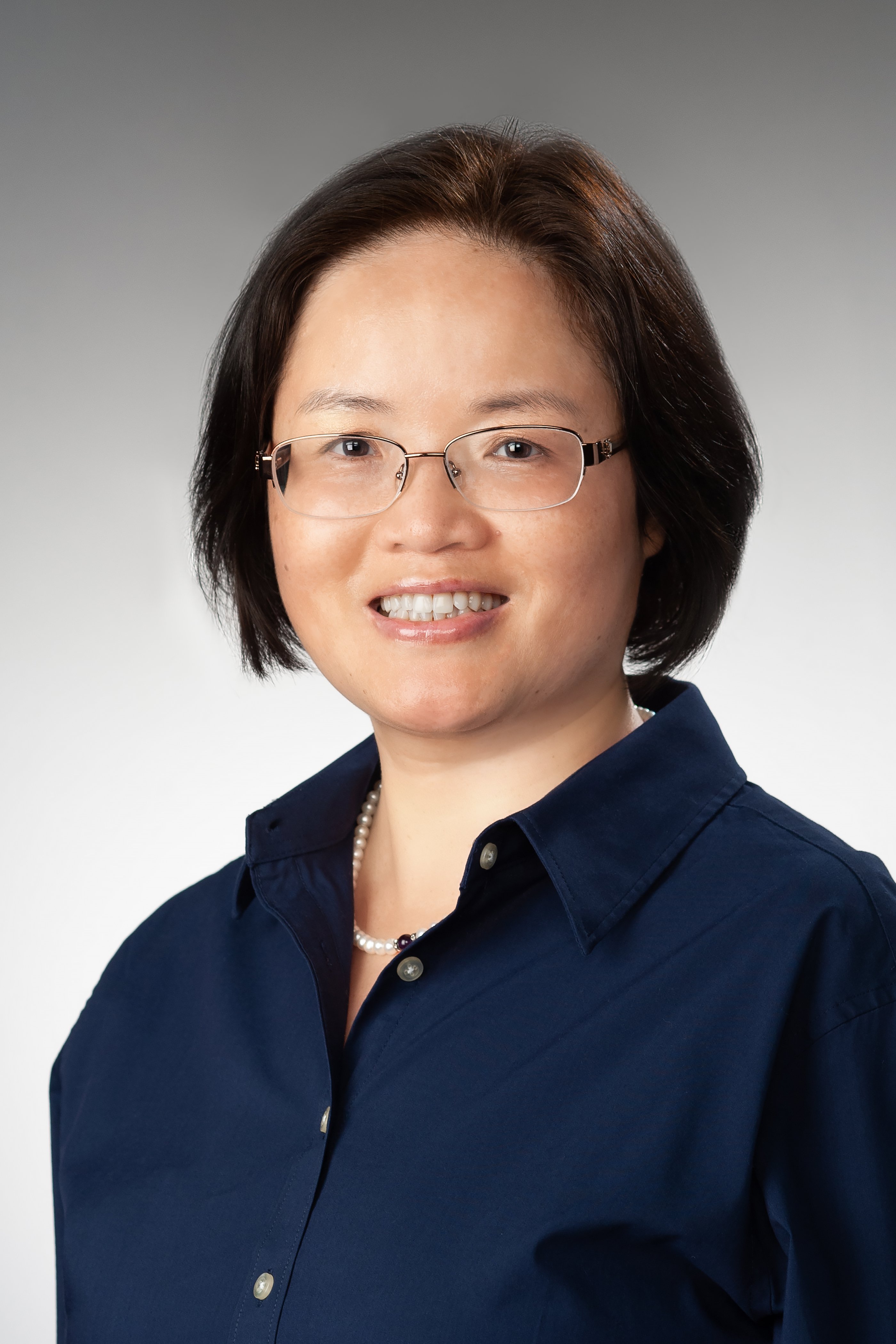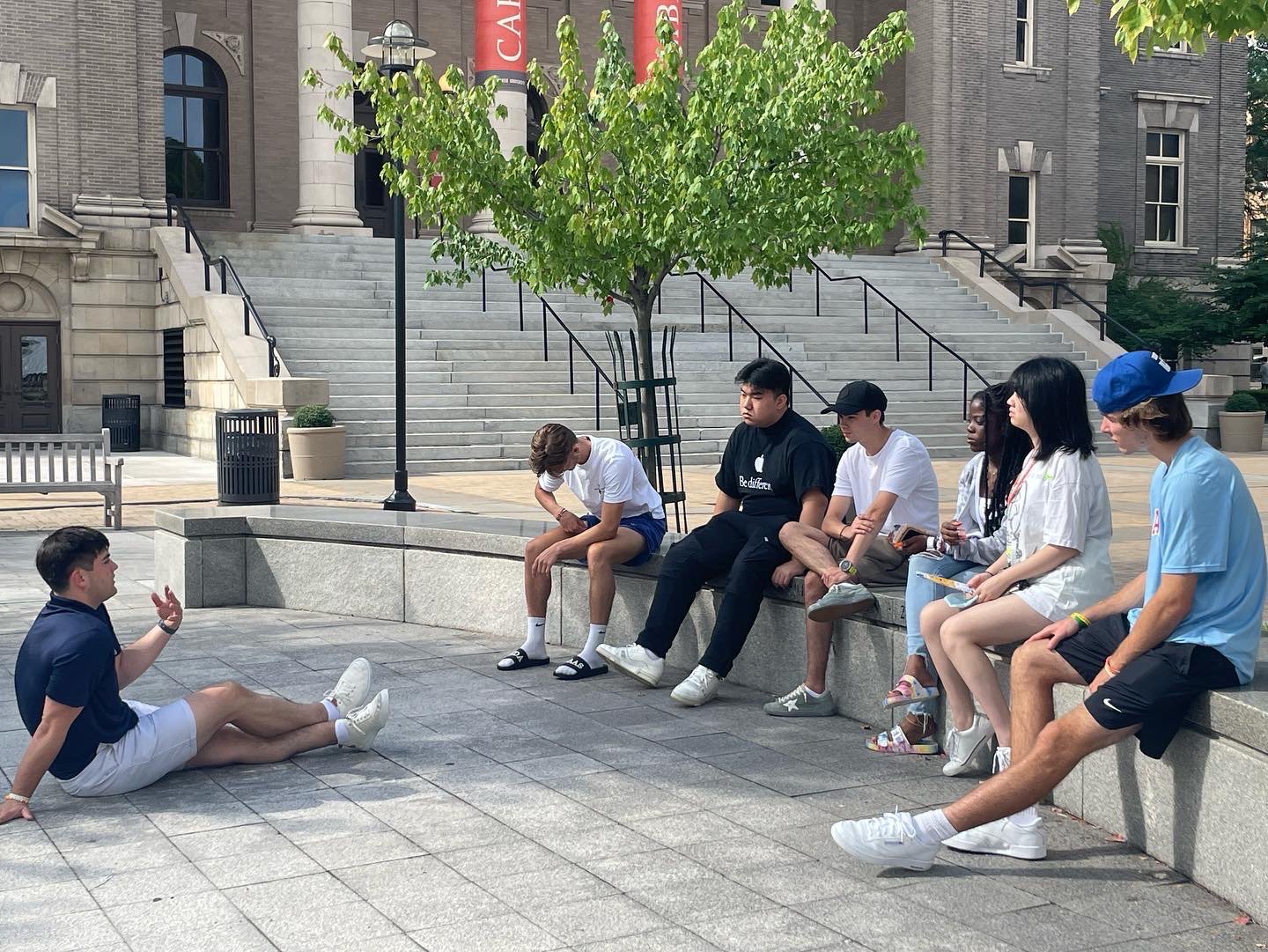Leading the Way on International Student Success Model
In her role as associate director of international student success for A&S | Maxwell, Ling Gao LeBeau takes a long view to helping every student achieve their goals—and is paving the way for others to follow.

What is the secret to achieving the best outcomes for international university students, such as preparing them successfully for employment or graduate school? Ling Gao LeBeau, associate director of international student success for the College of Arts and Sciences (A&S) and the Maxwell School of Citizenship and Public Affairs, makes it her daily business to answer that question.
There are approximately 4,000 international students from more than 100 countries currently enrolled at Syracuse University, in both undergraduate and graduate programs. Of them, the largest portion belong to the A&S community, where international students make up roughly 30 percent of the student body. Before LeBeau’s arrival at A&S three years ago, no one position focused solely on their success. In fact, her position is unique nationwide, with other institutions viewing international student support through the lens of visa eligibility and related issues.
At A&S, however, the College evaluated the needs of international students and determined they would be best served through the student success (advising) office. With LeBeau in place, A&S’ efforts, so far, appear to be paying off. In Fall 2022, the first-year retention rate (the percentage of students who return one year after their original arrival) for international students at A&S | Maxwell was 91.5%—the schools’ highest rate since 2010 and second highest on record.
We recently spoke with LeBeau about her efforts and philosophy of making a positive impact for the international student community.
Can you tell us a little about you and the experience you bring to this position?
Ling Gao LeBeau (LGL): Before coming to Syracuse, I was at Western Carolina University for 5 years; before that, at Indiana University for 11 years. My work [in those places] was similar, but broader. I was overseeing entire campus’ international initiatives: programs for scholars, study abroad, faculty development. It was very comprehensive. Here my focus is more narrow. Before [I got here], there was never a position like this at Syracuse—or anywhere in the U.S., focusing on international students’ academic success. I’m seeing more and more attention being paid to this area now.
And why is that important?
LGL: The United States is the most popular destination for “global mobility” students. There are about 1 million international students studying here—[out of about] 5.6 million in the world. North America does a lot for international students, but it’s a traditional approach. There’s a heavy focus on getting and maintaining visas, and on language training and social opportunities. But the academic and career piece has absolutely been overlooked.
Before I took this position, I realized this was the gap. When I saw the posting, I thought, this is interesting, this is new. I want to make some difference.
And what has been key to making a difference?
LGL: We have an “international student success model” that we studied and created from scratch. There are five pillars to support this model: peer mentors; pre-arrival academic coaching; advisor training; academic intervention; and communication.

The Peer Mentor Program is one of the most vital and popular of the pillars. Can you explain a bit about how it works?
LGL: The first year we did it, we asked new students to tell us if they wanted a mentor or not. The results were very positive, so the second year we assigned a mentor to every international student. Mentors are upper-class students, both American and international. One peer mentor will have 6 to 10 students as a small group. We [provide] a syllabus and guidelines; we train and monitor them carefully.
Mentors start to communicate casually with their students in early May—well before they come to school. The program lasts until December. Once they are on campus, it’s more formal and they meet once a week and follow the syllabus with topics of discussion (such as life on campus, or registering for classes). They also organize one on-campus and one off-campus social event in the semester, to help create bonding.
How does one become a peer mentor, and is there an ideal candidate?
LGL: Mentors are volunteers (we award them one academic credit if they want it), who apply to be selected. First, they need to be empathetic, and aware of what the new students are going through. [They have to be] approachable and personable; fully aware of campus resources; and academically strong (we require a minimum GPA of 3.0). But most important is personality and attitude.
Have you seen success with the mentor program so far?
LGL: Results show that for the students who are actively engaged with mentorship, their academic performance is much better, and their GPAs are higher. It’s helpful that the mentors are peers. The students see us [staff] as authority figures, so they feel more comfortable and feel they can open up with people their own age.
Beyond mentorship, you offer academic support—pre-arrival academic coaching for new and transfer students, as well as academic intervention. Why are those important?
LGL: You can’t just say [to a student coming from overseas], “Go take a class.” They need the context of what they can expect in an American university. I created a non-credit course, called Catapult, in Blackboard. It has lots of easy-to-follow videos and training modules to help them understand how the university system works and the people they will work with. I also host an online meeting once a week during the summer. Anyone—students and parents—can join and ask questions.
Academic intervention [comes later], for students on two ends: high achieving and at-risk. I work with the advisors; when we notice an outstanding, high-achieving student, we reach out and ask if they’re interested in doing research, for instance. If one is on academic probation or suspension, on the other hand, we reach out to ask them what they’re worried about and how we can help. [In cases where] students disclose a troubled mental state, we discuss it with them, refer them to—or even walk with them to—the counseling center.
You mentioned communication as a pillar of the program. Aside from reaching out one-on-one, what is your approach to keeping lines of communication open with international students?
LGL: This is key. It’s about developing a relationship with them. If they don’t trust you, they won’t talk to you or attend your programs. Every Monday, I send an international student email newsletter. I don’t put lots of text in it, just a succinct list of things they need to know that week, such as deadlines for scholarships. I also host Wednesday student forums, in-person.
Also, we do Instagram, WhatsApp and WeChat. We use social media to communicate with parents as well.
Parents are thousands of miles away but they are the students’ number one supporters, so I make sure we’re on the same page. I send them a monthly newsletter, and also host an online meeting once a month, so they can share and ask questions.
What are your plans for the program going forward?
LGL: We are very confident, and feel like this approach is working. Syracuse is leading in this area, so we’ve submitted an official proposal to NACADA [a worldwide, professional organization for academic advisors] to create an international student success advising community. [The hope is] that other schools’ advisors can benefit from the initiatives and strategies we create.
